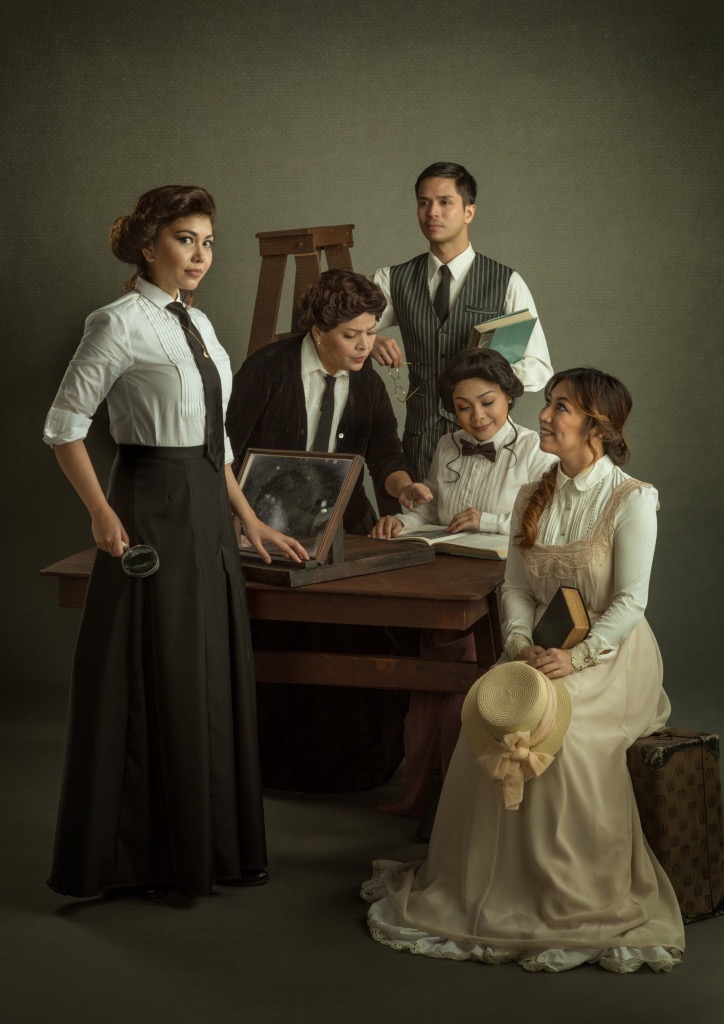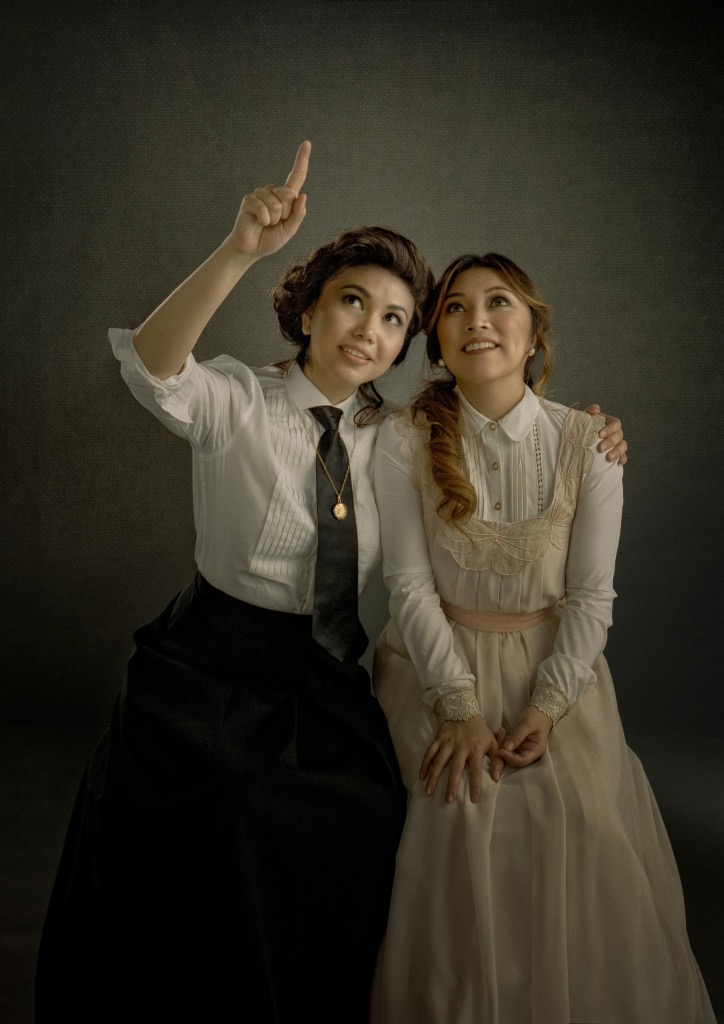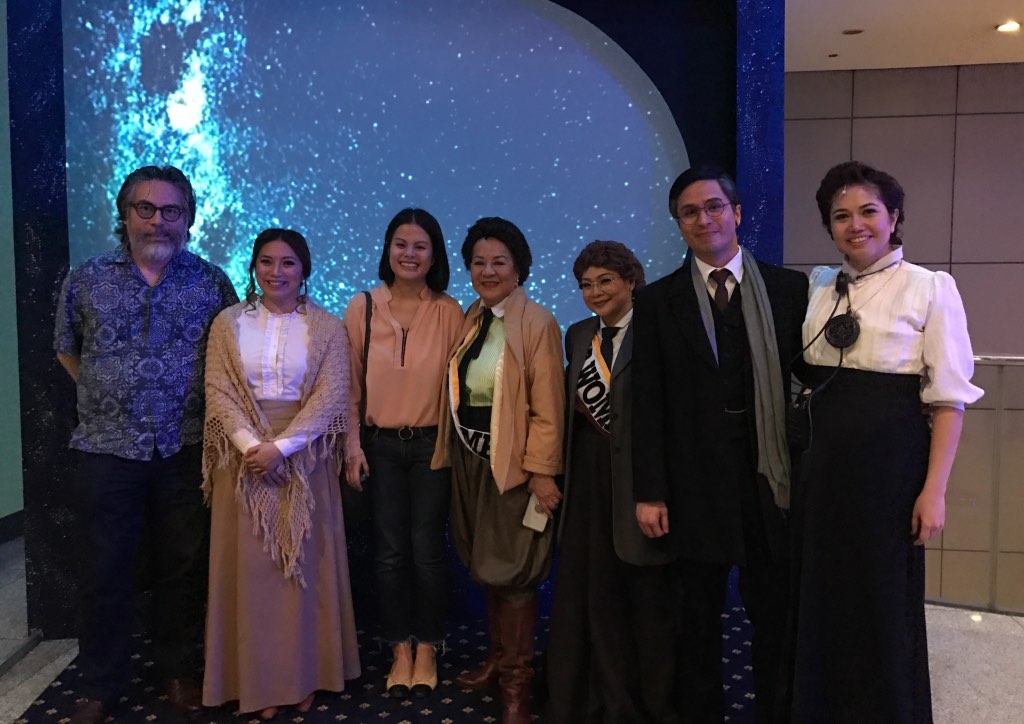During the intermission period of Joy Virata’s production of Lauren Gunderson’s Silence Sky, I enjoyed a short conversation with film and theater director Carlos Siguion-Reyna, whose wife, Bibeth Orteza, was appearing in the play. “Have you heard of Silent Sky before?” he asked me. Embarrassed, I said no. I quickly took my iPhone out of my pocket and googled the play. Written by acclaimed writer Lauren Gunderson, I learned that the production was fairly new, having premiered in the United States as recently as 2017. I was shocked that many people weren’t talking about the play. It is a widely intelligent piece of work, telling a story of female empowerment, as relevant today as its 1900s setting.
Director Joy Virata’s production has a lot of heart, and I was lucky enough to see the show before it closes on February 10, 2019. I write this today to help spread the word, and hopefully, more of you will catch the production before the final curtain call this weekend.

Silent Sky tells the true story Henrietta Swan Leavitt, one of the earliest female astronomers of 1900s. Growing up in a small town, Henrietta is ecstatic when she is invited to work at Harvard University’s Observatory alongside other female scientists. When she arrives, she discovers that her work is that of a “computer”, somebody who measures and catalogues stars. The men of Harvard do not let the women participate in more important research, leaving them in a small office to do painstaking mathematical work without giving them much credit for their large contribution to the overall research.
Henrietta, a passionate and intelligent young woman, spends tireless hours working on personal research, which eventually becomes some of the most important early discoveries in astronomy. She would later go on to win a Nobel Prize. Although the lead character is suppressed because of her gender, Silent Sky is not a sad tale. The story may be tragic and ends in a melancholy note, but audiences will walk away happy and inspired. It is very much a feel-good show, similar to the hit movie Hidden Figures in 2019. The achievements done by the characters on stage are quite remarkable, making the story an important one to tell.
The pre-dominantly female cast is quite fantastic, bringing to life Gunderson’s words with oomph, depth and feeling. This is one aspect of Silent Sky that I really loved. Despite a story focused on Henrietta and her research, the play goes further to examine female behavior and mindsets during this suppressed, sexist period in time. The cast includes Caisa Borromeo, who plays Henrietta’s sister Maggie, “the traditional woman” archetype, who marries and has children rather than going to Boston with her sister. Maggie’s characterization has more than meets the eye. She may be traditional, but her longing to accept her sister’s job and radical theories shows that she is more than willing to embrace change. She represents the “every-woman” of the time, struggling to juggle the ideas of the new century and her traditional beliefs.
Bibeth Orteza and Naths Everett play the roles of Henrietta’s fellow-scientists. Although they add comedic relief to Henrietta’s often-tragic story, I must note that they are never forgotten as mere supporting characters. Their back story has depth, and represents women of the society. Orteza plays Henrietta’s mentor and direct-superior Annie. Already a staple of stage and screen for decades, the veteran actress plays a feminist character, whose personal motives are to improve the quality of life for American women in the 1900s. Her transformation from cranky computer to hopeful Sister Suffragette is quite great to watch. Glynis John’s Mary Poppins character would be proud.

Everett’s Will is the more comedic role from the two. Although her line readings in a thick Scottish accent often caused the audience to burst out laughing (in a good way–Will is a comedic character), her story is very important. She represents the immigrants of the time, who went to America looking for a better life. Her back story is mentioned very briefly in the production, but if you pay close attention, you will realize her importance to the tale and its themes. Without Orteza, Everett and Borromeo’s strong ensemble work, the play would only be half as good.
Topper Fabregas plays Peter, the only male cast member in Silent Sky. Peter is Henrietta’s love interest. Fabregas portrays him with a boyish shyness, similar to that of Mr. Bingley’s in Pride and Prejudice. It works well. In a cast of strong female actors, Fabregas holds his own, but allows his co-stars to take center stage. This is not to take away any of the young actor’s talents, he was the ideal scene partner for the leading actress. Their chemistry made the audience swoon.
Last, but definitely not the least, there is Cathy Azanza, who plays the lead role of Henrietta, or “Henri” as she is often referred to in the production. Azanza’s invokes her own version of Little Women’s Jo March. Instead of a writer, she is a scientist. Instead of New York, they are in Boston. But the effect is the same—Azanza was strong and intelligent in her performance. You can feel her passion for Gunderson’s words right to back row of the theater.
The solid work of the entire ensemble should be credited to Joy Virata, their director. This is the second staging of Silent Sky in Manila, and Virata retained the original cast, while adding Orteza. Virata chose very minimal production design to tell this story, and that was the right choice. It gave the actors the chance to own their stage, and get lost in their roles, without the distraction of smoke and mirrors. And although the show was almost three hours long in runtime, Virata was able to keep the audience engaged with her staging. The sound, the lights (the set featured beautiful recreations of star constellations), and the right ensemble and director make Silent Sky a show worth watching. I truly enjoyed it, and implore that you run out and get tickets now. It is an important story to tell, and the team behind it has knocked it out of the park.

“Silent Sky” is playing at Carlos P. Romulo Auditorium in RCBC Plaza from February 1 to 10, 2019. Friday show begins at 8pm, Saturday show at 3:00pm and 8pm, and Sunday show at 3:00pm. For tickets or inquiries, please call or text Ria Pangilinan at (0917) 537 8313 or email her at [email protected]. You may also get your tickets at Ticketworld.
RELATED READS: Romeo and Juliet is Coming to Ballet Philippines this February (and We Have All the Deets)!





